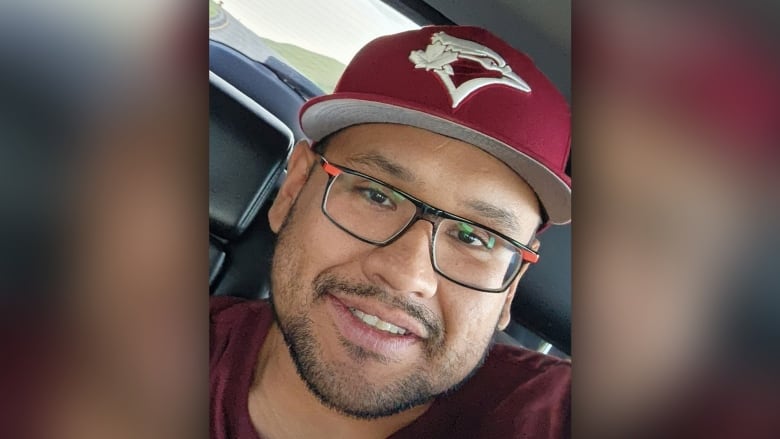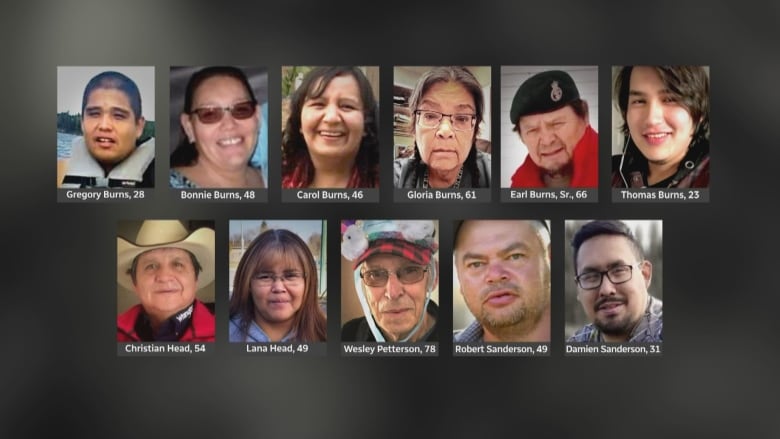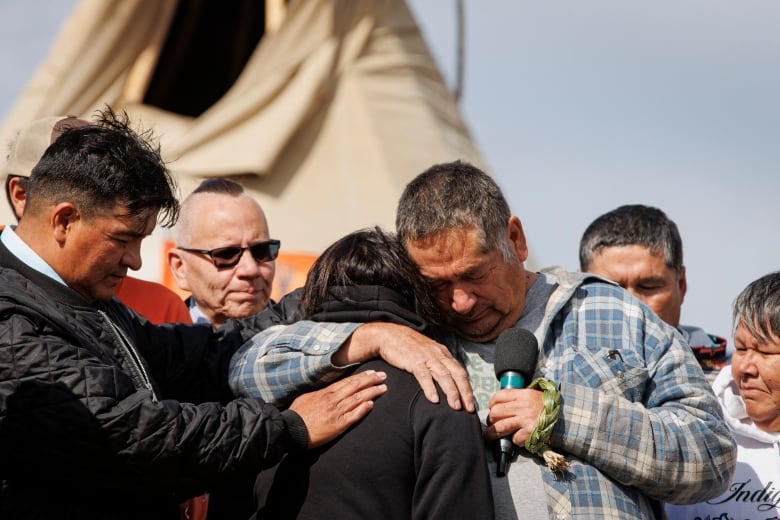
This First Person article is the experience of Curt Sanderson, who lives in Saskatoon. For more information about CBC’s First Person stories, please see the FAQ.
WARNING: Some content may be distressing to readers.
Sunday, Sept. 4, 2022.
I woke up to the sound of my phone buzzing. Twenty seconds later, it was buzzing again.
There was an alert prominently displayed on my lock screen.
“Alert: RCMP are currently searching for Myles Sanderson and Damien Sanderson. Contact RCMP immediately if you have any information about their whereabouts.”
Those are the names of my stepbrothers. ‘What the hell is going on?’ I wondered.
The previous year, my mother married Myles and Damien’s father. We’d met sometime before at our parents’ Thanksgiving meal. From what I could tell at that meeting, Myles seemed good-natured and easygoing. We made small talk and joked about becoming stepbrothers as adults, with me being in my late thirties.

At that time, he was in the process of trying to give up drugs and alcohol and being a better dad for his children — something with which I could relate as I had completed treatment for alcohol addiction in 2020. I wondered how I could share what I had learned in my own recovery to help him with his journey. I never got the opportunity to reach out to him, which is something that still bothers me today.
I was surprised to see that Damien was included in the alert. I didn’t know him well, but I saw him as a very shy, quiet and reserved family man with a wife and kids.
Once my sleepy confusion cleared, I called my mom and asked what was happening. She didn’t have much information, but I could sense that something was wrong.
As more details began to come out about the stabbing rampage Myles had gone on in James Smith Cree Nation and Weldon, Sask., that eventually led to the death of 11 people and several more injuries, my brain struggled to compute the magnitude of this disaster.
At the same time, I was deluged with texts and messages asking if I had any relation to the tragedy.
My mind was numb and my heart was broken for all the mothers, fathers, mushums, kokums and babies who were affected. I thought about all the hard Christmases, birthdays and bleak anniversaries there would be from this moment on.

The weeks following the murders were surreal. I found myself stopping to ask myself if these things were actually happening. Each development felt like a twist in a never-ending bad dream.
At work, my name plate was taken down out of view and it was suggested that I take a month off.
I would go to appointments and the staff would see my last name and make jokes about being afraid of me.
The strange thing was that my mother just happened to marry someone with the same last name as her. We were from a different Sanderson family from the Mistawasis First Nation.
I was also surprised at the amount of love and support my family received. Friends and colleagues sent over home-cooked meals and monetary donations to tide us over.

While I had known of Myles’ struggles with the law and drugs and alcohol, I’d never seen that side of him myself. It’s hard to reconcile the Myles I had met with the news reports that shared stories of his violence and abusiveness.
He was somebody who fought and lost his battle with rage, addiction and mental health in the absolute worst possible way imaginable and the unfortunate souls in James Smith Cree Nation and Weldon were the victims of his lost battle. His brother, Damien, would end up being among those he killed.
When I got the news about Myles being arrested, I felt overwhelming relief radiate throughout my body. After feeling nothing but dense sadness, grief and concern for my stepfather, this was a needed moment of comfort that he wouldn’t have to bury two children that week.
Instead, reports came out that Myles had gone into medical distress after he was taken into police custody. I imagined what must have happened, that as the police were closing in on him, he would have swallowed every drug that he had before he was arrested. A later inquest would show he died from an acute cocaine overdose.
September marks two years since the James Smith tragedy, but it also marks four years of sobriety for myself.
I know what it feels like to wake up the next day to face the consequences of something I did while drinking and using. These are things I never would’ve imagined I was capable of doing.
If I had never met him, I would have assumed that Myles was an evil and hateful person. But I’d seen another side of him and know that he failed to get the help he needed from mental health and corrections systems to deal with decades of intergenerational trauma as well as drug and alcohol addiction. When it comes to dealing with addictions, there are thousands of people who are in that same rocky boat.
The scope of the problem can feel overwhelming, but I know we can’t ignore the tragedy of James Smith Cree Nation or think of it as one isolated incident that could never happen again. The healing work left to do is enormous.
The night before Myles’s funeral, I walked down to the river in Saskatoon and stood silent by the railing overlooking the South Saskatchewan River. The different coloured city lights from the downtown buildings reflected into the blackness of the river water. I walked around the river until my knees hurt before finally going home to be alone.
I wondered how long it would take to feel normal again, to feel at rest and at peace. When it comes to my feelings on the tragedy of James Smith Cree Nation, I’m still waiting.
If you or someone who know is struggling with substance use:
If you or someone you know is struggling, here’s where to get help: